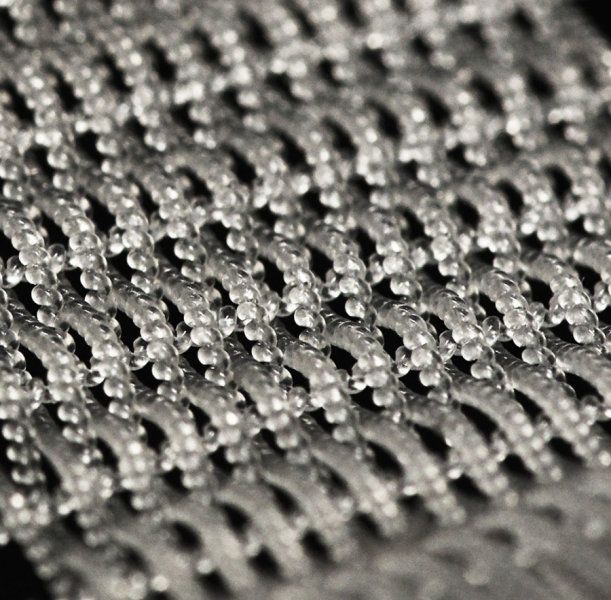Archive for the ‘robotics/AI’ category: Page 2216
Sep 27, 2016
Google is using balloons to provide internet
Posted by Elmar Arunov in categories: internet, robotics/AI
Sep 27, 2016
[AI Lab] Pepper robot learning “ball in a cup”
Posted by Dan Kummer in categories: entertainment, information science, robotics/AI

This video realized by the AI Lab of SoftBank Robotics shows how Pepper robot learns to play the ball-in-a-cup game (“bilboquet” in French). The movement is first demonstrated to the robot by guiding its arm.
From there, Pepper has to improve its performance through trial-and-error learning. Even though the initial demonstration does not land the ball in the cup, Pepper can still learn to play the game successfully.
Continue reading “[AI Lab] Pepper robot learning ‘ball in a cup’” »
Sep 27, 2016
Komatsu’s robotic mining truck completely dumps the driver
Posted by Shane Hinshaw in categories: robotics/AI, transportation

Komatsu’s latest autonomous truck fully embraces the notion of unmanned operation by ditching the cabin and adopting a design that optimizes load distribution and doesn’t distinguish between forwards and backwards.
Komatsu began trials of its Autonomous Haulage Systems (AHS) in a partnership with mining company Rio Tinto in 2008, and since then the technology has hauled hundreds of millions of tonnes of material in Chile and Australia’s Pilbara region.
Continue reading “Komatsu’s robotic mining truck completely dumps the driver” »
Sep 27, 2016
Scientists put a new twist on artificial muscles
Posted by Shane Hinshaw in categories: biotech/medical, cyborgs, nanotechnology, robotics/AI
In a perspective article published Sept. 26 online in the Proceedings of the National Academy of Sciences, a team of scientists at UT Dallas’ Alan G. MacDiarmid NanoTech Institute describes the path to developing a new class of artificial muscles made from highly twisted fibers of various materials, ranging from exotic carbon nanotubes to ordinary nylon thread and polymer fishing line.
Because the artificial muscles can be made in different sizes and configurations, potential applications range from robotics and prosthetics to consumer products such as smart textiles that change porosity and shape in response to temperature.
“We call these actuating fibers ‘artificial muscles’ because they mimic the fiber-like form-factor of natural muscles,” said Dr. Carter Haines, associate research professor in the NanoTech Institute and co-lead author of the PNAS article, with research associate Dr. Na Li. “While the name evokes the idea of humanoid robots, we are very excited about their potential use for other practical applications, such as in next-generation intelligent textiles.” Science Based on Ancient Art.
Sep 26, 2016
Lawrence Krauss Versus Freeman Dyson on Gravitons
Posted by Karen Hurst in categories: alien life, engineering, genetics, particle physics, quantum physics, robotics/AI, space travel
Yesterday, in the New York Review of Books, Freeman Dyson analyzed a trio of recent books on humanity’s future in the larger cosmos. They were How to Make a Spaceship: A Band of Renegades, an Epic Space Race, and the Birth of Private Spaceflight; Beyond Earth: Our Path to a New Home in the Planets; and All These Worlds Are Yours: The Scientific Search for Alien Life.
Dyson is “a brilliant physicist and contrarian,” as the theoretical astrophysicist Lawrence Krauss recently told Nautilus. So I was waiting, as I read his review, to come across his profound and provocative pronouncement about these books, and it came soon enough: “None of them looks at space as a transforming force in the destiny of our species,” he writes. The books are limited in scope by looking at the future of space as a problem of engineering. Dyson has a grander vision. Future humans can seed remote environments with genetic instructions for countless new species. “The purpose is no longer to explore space with unmanned or manned missions, but to expand the domain of life from one small planet to the universe.”
Dyson can be just as final in his opinions on the destiny of scientific investigation. According to Krauss, Dyson once told him, “There’s no way we’re ever going to measure gravitons”—the supposed quantum particles underlying gravitational forces—“because there’s no terrestrial experiment that could ever measure a single graviton.” Dyson told Krauss that, in order to measure one, “you’d have to make the experiment so massive that it would actually collapse to form a black hole before you could make the measurement.” So, Dyson concluded, “There’s no way that we’ll know whether gravity is a quantum theory.”
Continue reading “Lawrence Krauss Versus Freeman Dyson on Gravitons” »
Sep 26, 2016
Will driving your own car become the socially unacceptable public health risk smoking is today?
Posted by Karen Hurst in categories: health, robotics/AI, transportation
Improved autonomous vehicle technology could reduce the tens of thousands of annual U.S. deaths due to human error behind the wheel. Are driverless cars the next big public health intervention?
Sep 26, 2016
Ghosts in the Machine: Female Computers in Science Fiction and History
Posted by Karen Hurst in categories: computing, military, robotics/AI
When the computer is addressed in many science fiction shows, it often replies in a female-coded voice. From Majel Roddenberry’s Federation computer voice in the Star Trek series to the sentient ship AIs in Andromeda, Killjoys, Dark Matter, Outlaw Star, and Mass Effect, artificial intelligence has been a science fiction regular since at least the 1960’s. There are male-coded AIs as well—J.A.R.V.I.S., Hal, that weird Haley Joel Osment-bot from A.I.—but women have been part of humanity’s relationship with electric computers since the very beginning.
Jennifer S. Light’s article “When Computers Were Women” discusses the ENIAC (Electronic Numerical Integrator and Computer) project during World War II, and how the people doing the actual computational tasks were a group of civilian and military women. The women were actually the “computers,” and were creating a machine that would someday replace them. The concept of the women as the actual computers made me think about how many artificial intelligences, whether in android form or integrated into actual ships, are coded female.
Light’s article also pointed out that history buried these early female computers. Their work was made light of, devalued, and all credit was given to the male inventors of ENIAC, reducing them practically to “ghost in the machine” status. This is where my mind made the connection. So many computer and AI characters are coded female because even layers of sexism and inequality still can’t erase the connection between the first “computers” being women and the task of computing. You can take the woman out of the workplace, but you can’t take the woman out of the machine she helped create.
Sep 26, 2016
Google’s ‘worst’ self-driving accident was still a human’s fault
Posted by Shane Hinshaw in categories: robotics/AI, transportation
Google said that one of its self-driving cars was involved in an accident in Mountain View, California last week. The accident was first reported Friday by 9to5 Google, which characterized the incident as Google’s “worst accident yet.”
In a statement, Google insisted its driverless car was not at fault. A crash report with the DMV has yet to be posted, so all the details have yet to be confirmed.
According to the Google, the accident occurred when a vehicle heading west on El Camino Real in Mountain View ran a red light and collided with the right side of a Google self-driving vehicle that was traveling northbound on Phyllis Ave. “Our light was green for at least six seconds before our car entered the intersection,” a spokesperson said.
Continue reading “Google’s ‘worst’ self-driving accident was still a human’s fault” »
Sep 26, 2016
Surprisingly simple scheme for self-assembling robots
Posted by Shane Hinshaw in category: robotics/AI

Small cubes with no exterior moving parts can propel themselves forward, jump on top of each other, and snap together to form arbitrary shapes. Watch Video
Larry Hardesty, MIT News Office October 4, 2013.















